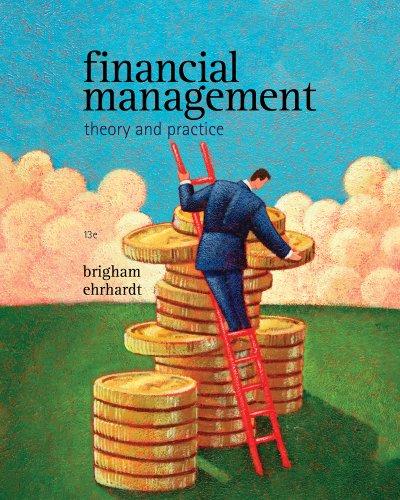Start with the partial model in the file Ch19 P08 Build a Model.xls on the textbooks Web
Question:
Start with the partial model in the file Ch19 P08 Build a Model.xls on the textbook’s Web site. Maggie’s Magazines (MM) has straight nonconvertible bond that currently yield 9%. MM’s stock sells for $22 per share, has an expected constant growth rate of 6%, and has a dividend yield of 4%. MM plans on issuing convertible bonds that will have a $1,000 par value, a coupon rate of 8%, a 20-year maturity, and a conversion ratio of 32 (i.e., each bond could be convertible into 32 shares of stock). Coupon payments will be made annually. The bonds will be noncallable for 5 years, after which they will be callable at a price of $1,090; this call price would decline by $6 per year in Year 6 and each year thereafter. For simplicity, assume that the bonds may be called or converted only at the end of a year, immediately after the coupon and dividend payments. Management will call the bonds when their conversion value exceeds 25% of their par value (not their call price).
a. For each year, calculate (1) the anticipated stock price, (2) the anticipated conversion value, (3) the anticipated straight-bond price, and (4) the cash flow to the investor assuming conversion occurs. At what year do you expect the bonds will be forced into conversion with a call? What is the bond’s value in conversion when it is converted at this time? What is the cash flow to the bondholder when it is converted at this time? (Hint: The cash flow includes the conversion value and the coupon payment, because the conversion occurs immediately after the coupon is paid.)
#!#
b. What is the expected rate of return (i.e., the before-tax component cost) on the proposed convertible issue?
#!#
c. Assume that the convertible bondholders require a 9% rate of return. If the coupon rate remains unchanged, then what conversion ratio will give a bond price of $1000?
Step by Step Answer:

Financial Management Theory And Practice
ISBN: 9781439078105
13th Edition
Authors: Eugene F. Brigham, Michael C. Ehrhardt






